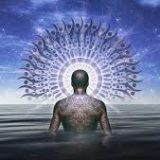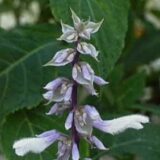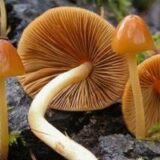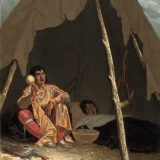Table of Contents
Easily Accessible Hallucinogenic Plants
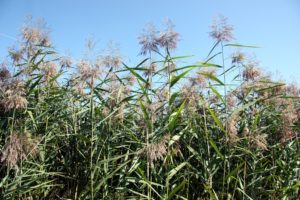
Are There Any Natural Hallucinogens That Are Easy Accessible?
People often think Hallucinogens are more obscure and much more rare than they actually are. In fact, hallucinogens are everywhere. They may be more prevalent in certain parts of the world (such as the Amazon and other tropical rain forests), however, they are most certainly available everywhere to some extent or another. Surprisingly, however, there are many common plants that are often right before most of our eyes, that possess psychoactive, hallucinogenic properties. Some of these plants have culinary uses and others are even planted for their beauty. The plants may have many other purposes, or no known purposes to the common man at all…and still have hallucinogenic effects. Some plants require other substances, or certain extraction/manufacturing procedures in order to achieve a hallucinogenic substance.
Yes, a lot of really powerful hallucinogens are most certainly available in common, every day plants. Some are more powerful than others, and some are more abundantly available than others. Hallucinogens can be found in some of the most common barks, roots, foliage, flowers and buds, berries and even fungi. Sometimes these plants have a rich history of being used for their hallucinogenic properties, other times, there is a definite lack of lore.
List of Common Plants that Are Hallucinogenic
This is a list of some of the most common plants found around the planet, or in certain regions, which are known to be hallucinogenic. Please note that just because it is commonly accessible in the wild, does not make it legal to use as a hallucinogen. In fact, many of these plants are legal only for medicinal, culinary, ornamental or gardening purposes. This list is in alphabetical order.
Common Reed (Phragmites australis)
Common Reed is a highly invasive weed-like species that grows in wetlands, near rivers, highways, the edges of forests and ditches, swamplands and marshes. It basically grows anywhere warm or tropical and with water nearby. While the Common Reeds have had a number of uses throughout time, Phragmites australis has been found to have FOUR hallucinogenic compounds including: N,N-DMT (most important and valued in recreational use), 5-MeO-DMT, 5-OH-DMT (aka bufotenin) and gramine. Common Reed, like its close cousin Reed Canary Grass, is a very common ayahuasca analgog.
Datura (Datura spp.), Also some Brugmansias
Many hallucinogenic species of Datura exist throughout the world. They have many different names, and these names can come as a result of looks, effects or ancient stories. Some of the hallucinogenic Daturas have been called “Thorn Apple,” “Hell’s Bells,” “Devil’s Weed,” “Jimsonweed,” and even “Moon Flowers.” They usually require warmer temperatures but can be found throughout nearly every region of the world, with a higher concentration in the United States, Mexico, Central and South America. Some of the Datura are very dangerous, even inducing coma or death. There are famous instances of some of the Datura species wiping out entire colonies and groups of people. So many of them are powerfully hallucinogenic though, and can create ridiculous delirium. In fact, sometimes people even forget who they are and what they are doing while on certain Datura species.
DXM (Dextromethorphan)
This one is probably literally in almost every person’s medicine cabinet in common, every day cough syrup. DXM is a cough suppressant. While it may be dangerous to ingest in large quantities (especially frequently), from a mixture that contains other chemicals and ingredients, such as cough syrup, it is most definitely dissociative in nature. The dissociation effects are often mistaken for hallucinations. Truthfully, however, the real hallucinations do not start until around plateau 4, and that’s after a lot of DXM has been ingested. Beforehand, it’s more of an inebriation or intoxication, with euphoria and music appreciation. Some will argue DXM does not cause hallucinations, however, it most certainly does in the highest doses. DXM is non-naturally occurring, was first synthesized in 1946 and is considered an opiate. While it is not a plant, it is very common and being listed purely for comparison purposes.
Fly Agaric Mushrooms (Amanita muscaria)

Fly Agaric mushrooms also go by the name Fly Amanita. There are many Amanita mushrooms, but the Amanita muscaria contain hallucinogenic compounds which have given a lot of credence to the theory they are responsible for the ancient narcotic “Soma.” They provide powerful inebriation and are considered an intoxicating mushroom. They are not hallucinogenic in the same sense as the Psilocybin mushrooms, but instead, have a lot of color change significance (rather than distortion). They are most common on the American continents and throughout India.
Hawaiian Baby Woodrose Seeds (Argyreia nervosa)
Hawaiian Baby Woodrose (HBWR) seeds are one of the most potent sources of Lysergic Acid Amide known to man. LSA can be extracted (cold water extraction is the typical method), consumed fully, or administrated under the tongue (sublingual). They are far preferred to their LSA cousin, Morning Glory seeds, as only 4-12 of them need to be consumed or administered sublingual for the LSA affects to be achieved. Although the HBWR plant originated in India, and was later distributed on the Hawaiian islands (hence the name), it is now fairly common to find it cultivated all around the world. There are some pre packaged seeds that are guaranteed to be untreated and premium enough to contain high LSA content. The Hawaiian Baby Woodrose plant produces a beautiful flower and is very commonly procurred for its ornamental value as a naturally gorgeous climbing vine.
Magic Mushrooms (Psilocybin and Psilocin)
So far, more than 200 species of mushrooms have been found to possess the psychedelic compound Psilocybin, most also possessing Psilocin. The most powerful and sought after mushrooms (for their Psilocybin content) are the members of the Psilocybe genus. Specifically, the most commonly used hallucinogenic (and strongest) are often considered Psilocybe azurescens, Psilocybe semilanceata, and Psilocybe cyanescens. The effects of magic mushrooms are often compared to those of Mescaline, LSD, LSA and DMT. Magic mushrooms grow in all sorts of places, but are more commonly found on horse or cow dung, fertilized soils, farm fields, and growing on rotting wood. There are different variations of magic mushrooms for nearly every region of the world. The various intensities and extraction values can differ from mushroom to mushroom.
Morning Glory Seeds (Ipomoea violacea)
Ipomoea violacea is the only species of morning glory that is used for LSA. The rest of them lack the LSA compound. Only the “Heavenly Blue” Morning Glory species contain LSA. Lysergic Acid Amide, the same substance found in the HBWR seeds, only in tinier quantities. It takes so many more of the Morning Glory seeds to achieve a successful LSA trip compared to the trip offered by Hawaiian Baby Woodrose seeds. Still, consuming 60-140 Morning Glory seeds can be consumed or extracted for a proper LSA dose. While LSA is often regarded as less hallucinogenic than LSD, it is absolutely hallucinogenic when done correctly. Morning Glory is sometimes extracted in a potted beverage form, though the seeds seem to be most frequently just consumed. Similarly to HBWR, consumption usually leads to a light nausea within 30 to 60 minutes, followed by the LSA and hallucinogenic effects.
Nutmeg (Myristica fragrans)
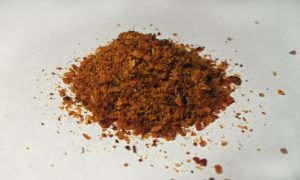
Myths on the internet have been swirling for generations about nutmeg but the verdicts are absolutely in. Nutmeg is 100 perfect hallucinogenic in high enough doses. It does often come with a huge side of intolerable nausea, however, some psychonauts have mastered the art of getting a hallucinogenic high off of Nutmeg. To be clear: we are talking about Nutmeg the spice, not containers of hazelnut spread. It can take many many scoops of the ground spice to achieve hallucinogenic effects (also surpassing the nausea). It is very common, very easy to get a hold of, legal in nearly every country and considered to be the “go to legal high of choice” for several third world countries (mostly because it is cheap).
Petunia (Petunia violacea)
There are many species of Petunia in the Petunia family, and some of them have much stronger psychoactive effects than others. Some, are absolutely hallucinogenic, producing the distinct sensation of flying, floating or levitating. They are extremely common for ornamental purposes (for their looks). Many flower beds and gardens have a Petunia highlight or two! They are very easy to spot being that they possess beautiful colored flowers of all types (including purple, white, red, blue and even cross combinations).
Peyote Cactus (Lophophora williamsii)
The Peyote Cactus is the most notorious hallucinogenic cactus. It is the only one most people think of when they are asked “where does mescaline come from?” and it is also often considered the strongest hallucinogenic cactus (still in debate). Peyote contains ridiculous quantities of Mescaline, which is the active constituent that makes this cactus a hallucinogen. Mescaline is much like taking acid, and is also comparable to eating magic mushrooms (Psilocybin). Most experienced Peyote harvesters will only sever the top portion of the Peyote, leaving the rest of the cactus planted and intact. This top portion is called the “crown” and sometimes called “Mescale Buttons” or “Peyote Buttons.” They are the part of the cactus with the highest Mescaline content…so high it would not much be worth it to harvest the rest of the cactus. After the button is harvested, the cactus will regrow the crown, over and over again. In fact, sometimes it even regrows multiple crowns if the rest of the cactus is left in tact. These cacti are located so easily by their pinkish-red flower that spawns on the top of the crown.
Reed Canary Grass (Phalaris arundinacea)

Reed Canary Grass is one of the most robust and invasive plants on the planet. It is located all over the world, usually near marshes, wetlands, streams, rivers, ponds, or the sides of roads and forests. Yes indeed, Reed Canary Grass is in wide distribution! It is so valuable though, because of its high DMT content. In fact, it contains FIVE different psychedelics: N,N-DMT (most valuable in recreational use), 5-MeO-DMT, 5-OH-DMT (aka bufotenin), 5-MeO-NMT and Hordenine. There are many other plants which have higher DMT quantities, however, the pure overwhelming abundance of Reed Canary Grass often makes it a prime choice for DMT extractions.
San Pedro Cactus (Echinopsis pachanoi)
The San Pedro Cactus has often been hailed the “false peyote” (along with a few other cacti), however, some cultures consider this cactus much stronger than the Peyote. It does contain mescaline, and in extremely high quantities. Mescaline is a powerful hallucinogen, as previously discussed and its effects are often comparable to that of LSD. The San Pedro Cactus is sometimes used to create a variety of drinkable concoctions and there are a number of traditional preparations. Depending upon what region the San Pedro is harvested from, it may be more or less potent. It has been rumored that the weakest San Pedros are located in the United States, while the further South one travels, the stronger the Mescaline content, however, this rumor has not been verified.
Scopolamine (Hyoscine)
Scopolamine was first isolated as a plant alkaloid in 1880. It has been used though in various non-isolated plant preparations since prehistoric times. Throughout the years it has been combined with other drugs in medicine, psychiatric treatments, experiments, research and over the counter medications. It has also been sold itself for many purposes. Most frequently, it has been used as a treatment for motion sickness and is very commonly found in airports under a variety of brand names. Scopolamine is sometimes a confusing alkaloid, as many people have discounted its hallucinogenic properties, falsely so. It does come from the nightshade family, its nick name is “Devil’s Breath,” and it has been used to create zombies out of people in South America for centuries, perhaps longer. The drug is very capable of hallucinations in high doses, but is also considered one of the more dangerous alkaloids. Medicinally, it is still sometimes used to create a twilight sleep effect.
There Are Many Common Hallucinogens
Besides the fact that many hallucinogens have already been discovered, and that many of them are more common throughout the planet than people think…there are also many more to be discovered. In fact, less than 1 to 2 percent of the Earth’s tropical plants have even been explored medicinally or for psychoactive properties. This means, there are likely to be many more psychoactive substances to be discovered throughout the future and upcoming years. Mankind even has the power to synthesize new hallucinogenic compounds which are simply, structurally similar to those which are found in nature; this also being how many DMT, LSD, and similar compound analogs are created. But still, many hallucinogens, such as those on this list, are regularly available right under most noses!
Disclaimer: Botanical Shaman has provided this article for educational purposes only. This is not meant to encourage the extraction of illegal compounds from plants that are growing all around us and naturally present all over the planet (which arguably belong to all of us). This is just for educational purposes only.

